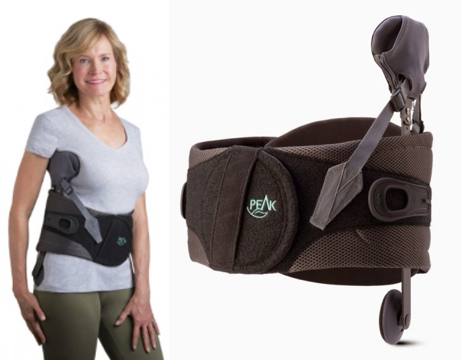Spinal Orthotics
The orthotics pictured below are a small sample of some of the devices available here at Access Prosthetics. We would be happy to schedule a free consultation with one of our Orthotists where we can discuss your unique needs. Working in concert with your doctor we will design an orthotic that fits you and your life style.

Aspen LSO Spinal Brace
Effective spinal bracing is a critical component of pain relief, functional mobility, and post surgical stabilization. The Aspen Lumbosacral Bracing System offers the practitioner multiple orthotic options that provide a high degree of immobilization, unparalleled comfort, and the ability to self-adjust to patients . . . even if they gain or lose weight. It combines the motion restriction of a custom fabricated orthosis with a dramatic improvement in comfort for better patient outcomes.

Peak Scoliosis Bracing System
-
The Peak Scoliosis Bracing System™ is an unloader brace designed to relieve pain, thus enhancing the quality of life for adult scoliosis patients.
-
This patented, highly adjustable brace from Aspen has been shown to improve posture, enhance mobility and ultimately increase a patient’s ability to perform activities of daily living.
-
The brace offers multiple configuration options to accommodate unique patient needs.
-
The Peak Scoliosis Bracing System includes the brace components, a Provider and Patient Inservice Training DVD, a Patient Handbook and Instructions for Use.

Aspen Collar
The Aspen collar is a cervical spinal stabilization device. It is manufactured from plastic and Velcro with replaceable foam liners. The two-piece design allows for simple application and removal. It is easily modified by the Orthotist to maximize comfort, allowing usage for up to 3 months or as recommended by the spinal surgeon. The Aspen is used for post-trauma and post-surgical applications. Common injuries treated with an Aspen are:
-
occipital condyle fractures
-
bony and ligamentous injuries from C1 – C7
-
diffuse soft tissue injuries from C1 – C7
It is also used to maintain a stable head and neck position to reduce pain for:
-
patients with neurological disorders
-
cancer patients for non-operative management
-
patients with musculoskeletal pathologies that cannot maintain their own neutral head orientation
It is often used for short periods of time to allow a patient to accommodate for muscle weakness post-Halo-usage.
